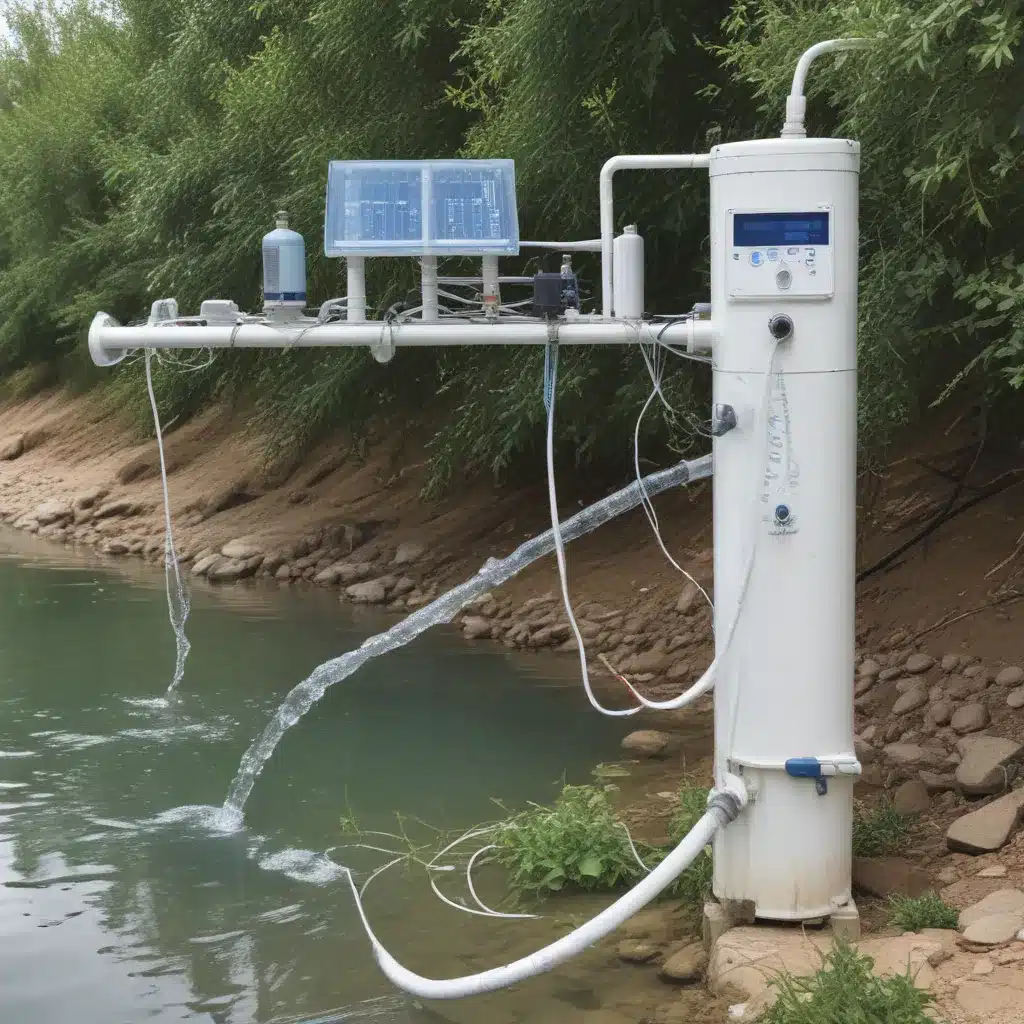
The Urgent Need for Innovative Water Quality Monitoring
Industrialization and urbanization have significantly contributed to environmental pollution, particularly in water bodies. The consequences of this pollution are dire, impacting both the environment and public health. Contaminated water can cause a range of health problems, from food poisoning and diarrhea to respiratory diseases and skin ailments. In countries like Bangladesh, where industrial activities, especially in the garment sector, are prevalent, the dumping of waste into rivers and canals has reached alarming levels, resulting in a drastic decline in water quality and endangering aquatic life and ecosystems.
To address this critical issue, we have developed an innovative real-time water quality monitoring system using the Internet of Things (IoT). Our system operates at three distinct levels, collecting data from different layers of wastewater to provide a comprehensive understanding of water quality dynamics. By continuously monitoring key parameters such as temperature, turbidity, total dissolved solids (TDS), and pH, we aim to deliver accurate and timely information, enabling proactive pollution mitigation interventions.
Integrated IoT Approach for Multilevel Water Quality Monitoring
At the core of our system is an Arduino UNO microcontroller that seamlessly integrates the capabilities of various sensors and Bluetooth modules. The input layer comprises four sensors that measure the analog output from the water supply, including temperature, pH, TDS, and turbidity. These analog signals are then converted into digital data by the Arduino UNO, which is displayed in real-time on both the serial monitor and a custom-built Android mobile application.
The three-level monitoring system allows us to gather water quality data at different depths, providing a more comprehensive understanding of the wastewater environment. By collecting samples from distinct layers (Level 1, Level 2, and Level 3), with a 1-inch distance between each level, we can identify potential stratification or localized contamination patterns.
To validate the efficacy of our IoT-based system, we conducted extensive field testing at four strategically selected sites, including industrial zones in Narayanganj and Savar, as well as the Buriganga River, which is heavily impacted by industrial waste discharge. The collected data offers valuable insights into the water quality dynamics within these environments.
Revealing the Harsh Realities of Industrial Wastewater Pollution
Temperature Analysis:
Our analysis of wastewater temperature data revealed significant variations across the different sites. While some locations exhibited temperatures in the range of 25-29°C, which is close to normal water temperature, we also encountered samples with remarkably high temperatures, reaching up to 37°C. These elevated temperatures, often associated with industrial processes or waste disposal, can have far-reaching consequences, disrupting aquatic ecosystems, accelerating corrosion, and increasing energy consumption for treatment.
Total Dissolved Solids (TDS) Evaluation:
The TDS levels in the collected samples ranged from 170 to 360 ppm, significantly exceeding the acceptable thresholds and posing a grave threat to aquatic life. Even the lowest TDS value observed, 204.46 ppm, is alarmingly high, indicating the pervasive impact of industrial activities on water quality. High TDS levels can impair water usability for various purposes, exacerbate corrosion, and affect soil permeability, ultimately compromising the overall health of aquatic ecosystems.
pH Analysis:
The pH levels across the different sites were also highly concerning, with most samples exceeding 7.0 and reaching values as high as 10.90. The garment industry’s wastewater, particularly in areas with light dying processes, exhibited the most extreme pH levels, posing significant challenges for treatment processes and aquatic life. Acidic or alkaline wastewater can not only impair treatment efficiency but also lead to corrosion of infrastructure and detrimentally impact sensitive aquatic habitats.
Turbidity Measurements:
While the majority of the samples displayed turbidity levels comparable to standard tap water, ranging from 1.30 to 1.60 NTU, the Buriganga River stood out with a significantly higher turbidity of 12.89 NTU. Elevated turbidity levels, often caused by industrial activities or sediment runoff, can impair treatment processes, obstruct light penetration essential for aquatic life, and exacerbate sedimentation in water bodies, ultimately disrupting fragile ecosystem balances.
Leveraging IoT for Sustainable Water Management
The insights gained from our comprehensive analysis of industrial wastewater quality underscore the urgent need for real-time monitoring and targeted interventions to address water pollution. By integrating IoT technologies into our water quality monitoring system, we have empowered industries to precisely track water usage, detect anomalies in real-time, and optimize resource management processes. This synergy between IoT and industrial operations enables proactive intervention to minimize environmental impact, reduce water wastage, and ensure regulatory compliance.
Moving forward, the development of advanced sensor prototypes and refined data analysis algorithms will be crucial to enhance the accuracy and scalability of IoT-based water quality monitoring systems. By addressing these technical challenges, we can equip industries and governing bodies with the tools necessary to safeguard our precious water resources and foster sustainable environmental practices for the benefit of all.
Conclusion
The findings of our study have unveiled the harsh realities of industrial wastewater pollution, with alarming levels of temperature, TDS, pH, and turbidity observed across various sites. These insights emphasize the critical importance of continuous monitoring and holistic management strategies to mitigate the detrimental impacts on aquatic ecosystems and public health.
By leveraging the power of IoT technology, we have developed a comprehensive water quality monitoring system that delivers real-time data and empowers industries to make informed decisions. This integration of cutting-edge technology and environmental stewardship is a pivotal step towards sustainable manufacturing practices and the preservation of our shared water resources.
As we move forward, the development of advanced IoT-based solutions, enhanced sensor capabilities, and refined data analysis algorithms will be instrumental in driving a future where water quality management is proactive, efficient, and aligned with global sustainability goals. Together, we can create a future where clean water is not a mere aspiration, but a fundamental right for all.

